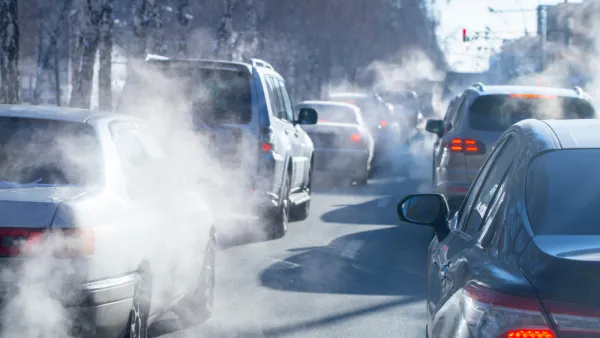Using complex transportation modeling, new research published in the Journal of Planning Education and Research confirms that developments built to the standards of LEED for Neighborhood Development (LEED-ND) reduce driving and associated emissions.
"Confirming previous analysis, newly published research indicates that real estate development located, designed and built to the standards of LEED for Neighborhood Development will have dramatically lower rates of driving than average development in the same metropolitan region," reports Kaid Benfield, who helped develop the standards with colleagues at the NRDC, the Congress for the New Urbanism, and the US Green Building Council. "In particular, estimated vehicle miles per person trip for twelve LEED-ND projects that were studied in depth ranged from 24 to 60 percent of their respective regional averages."
"For this reader, the study confirmed once again that shortening driving trip distances through central locations (as in redevelopment sites) is the single most important thing we can do to reduce vehicle miles traveled and associated carbon and other emissions," says Benfield.
FULL STORY: How LEED-ND standards reduce driving and associated emissions: new research

National Parks Layoffs Will Cause Communities to Lose Billions
Thousands of essential park workers were laid off this week, just before the busy spring break season.

Retro-silient?: America’s First “Eco-burb,” The Woodlands Turns 50
A master-planned community north of Houston offers lessons on green infrastructure and resilient design, but falls short of its founder’s lofty affordability and walkability goals.

Delivering for America Plan Will Downgrade Mail Service in at Least 49.5 Percent of Zip Codes
Republican and Democrat lawmakers criticize the plan for its disproportionate negative impact on rural communities.

Test News Post 1
This is a summary

Test News Headline 46
Test for the image on the front page.

Balancing Bombs and Butterflies: How the National Guard Protects a Rare Species
The National Guard at Fort Indiantown Gap uses GIS technology and land management strategies to balance military training with conservation efforts, ensuring the survival of the rare eastern regal fritillary butterfly.
Urban Design for Planners 1: Software Tools
This six-course series explores essential urban design concepts using open source software and equips planners with the tools they need to participate fully in the urban design process.
Planning for Universal Design
Learn the tools for implementing Universal Design in planning regulations.
EMC Planning Group, Inc.
Planetizen
Planetizen
Mpact (formerly Rail~Volution)
Great Falls Development Authority, Inc.
HUDs Office of Policy Development and Research
NYU Wagner Graduate School of Public Service





























